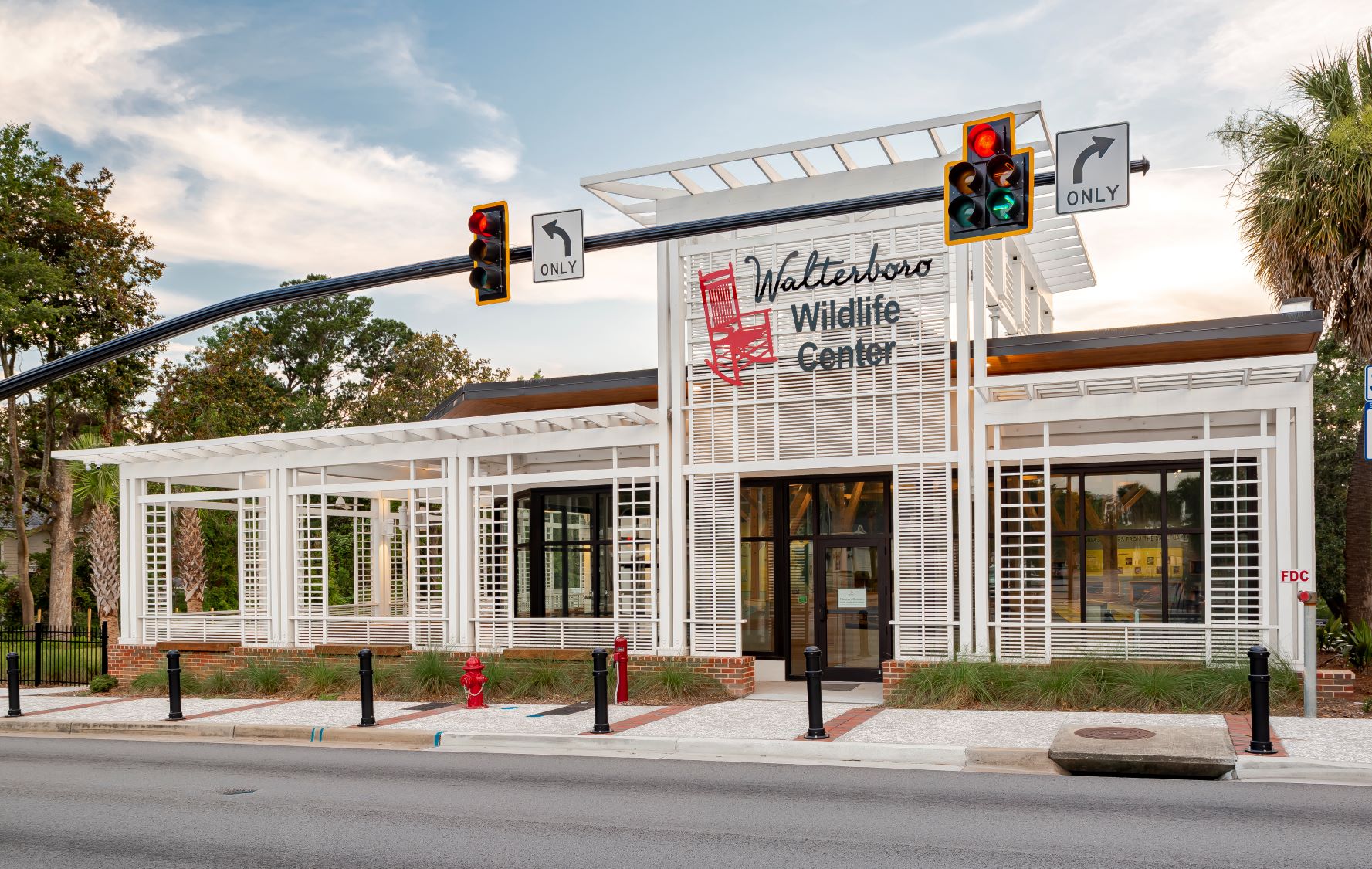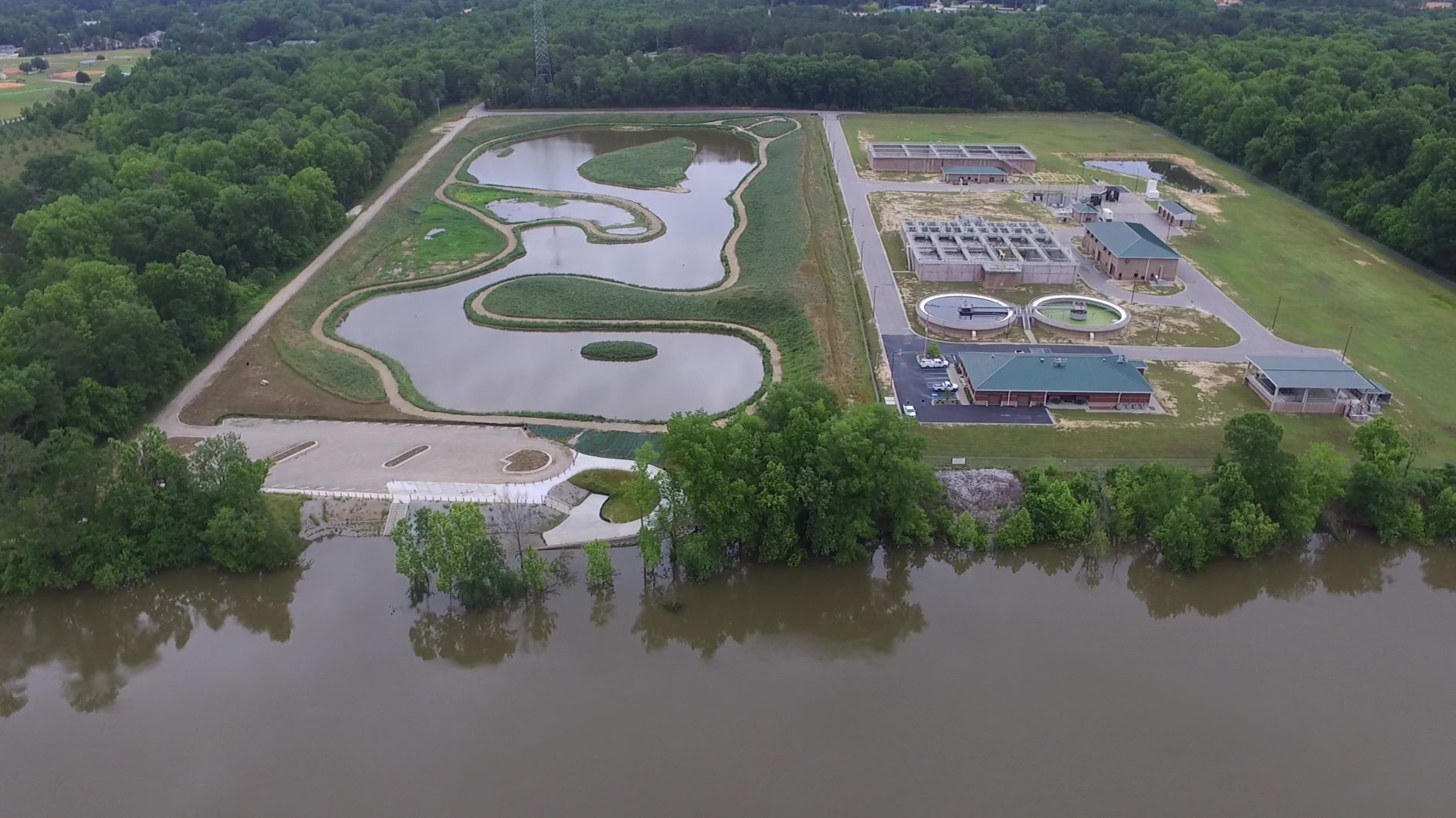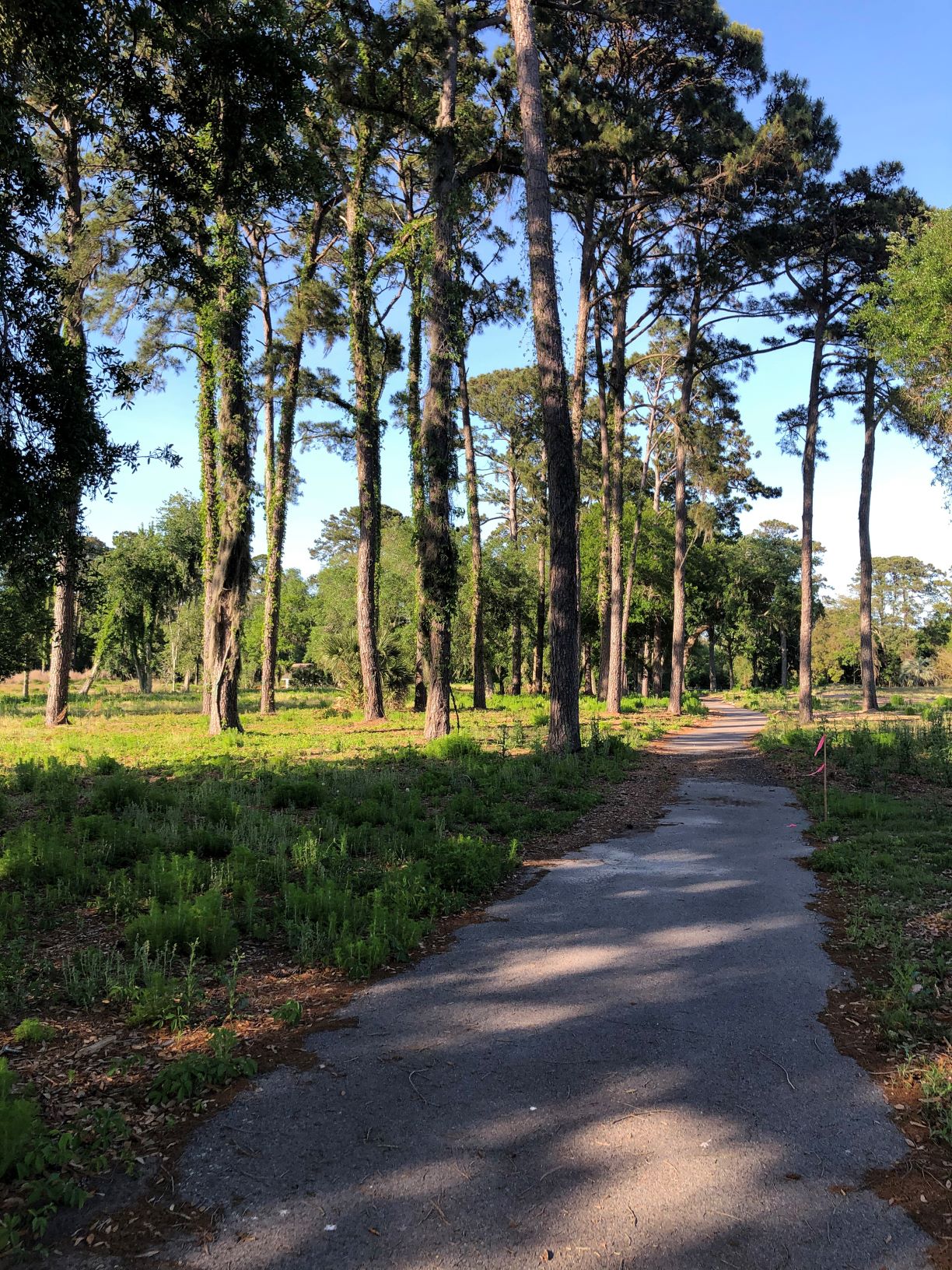The City of Walterboro is home to South Carolina’s largest municipal park — 600 acres of boardwalk, hiking and canoe trails that wind through the woodlands and creeks of the Ashepoo, Combahee and Edisto Basin that make up the Walterboro Wildlife Sanctuary.
Now, the park has a downtown component, too.
The Walterboro Wildlife Center, featuring an exhibit hall highlighting the significance of the wildlife sanctuary, is opened in a formerly vacant building in downtown Walterboro. Displays detail the history and hydrology of what is commonly known as the ACE Basin, and exhibits explain native plants and animal life of the Lowcountry swamps. It also is home to a large meeting space and an amphitheater for public performances and events.
Walterboro is just one example of cities and towns transforming old buildings or abandoned properties for new recreation purposes. From an old sewage lagoon redeveloped as a waterfront park to a former golf course turned into a nature and birdwatching park, South Carolina municipalities have found adaptive reuse solutions that draw visitors to their towns and expand offerings for residents.

The Walterboro Wildlife Center celebrates the ecology of the Walterboro Wildlife Refuge,
and also serves as an event and meeting space in the city’s downtown.
Photo: City of Walterboro.
In Walterboro, the city purchased an empty downtown building in 2013. The Walterboro Wildlife Center opened to the public in January 2020.
“The City of Walterboro has invested millions of dollars in beautification efforts to attract people downtown. Repurposing an abandoned building downtown helped the city transform the property into a great public space at the city’s center,” said Jeff Molinari, Walterboro’s city manager. “The creation of the large event space and amphitheater will infuse more vitality into the downtown area that will lead to increased activity over time.”
The Wildlife Sanctuary attracts visitors from all over the country, especially those traveling on the Interstate 95 corridor that passes by the city. Future plans for the center include increasing wildlife programming and presentations, field trips, event rentals for private and public functions, concerts and theatrical events in the amphitheater.
Molinari said the city was able to secure $625,000 in grant funding, including a Hometown Economic Development Grant, over the years to help pay for the center.
“Partnerships were critical to the project. U.S. Congressman James Clyburn helped the city secure a federal grant to purchase the building and property. The FROGS Committee, or Friends of the Great Swamp Sanctuary, a local nonprofit, helped to keep the idea moving forward, and Colleton County sold an adjacent 75-space parking lot to the city which allowed the city to improve the design by placing all of the parking off-site,” Molinari said.
In Camden, more stringent environmental regulations and improved treatment technologies forced the city to replace the 16.5-acre wastewater treatment lagoon it had operated for 40 years. But instead of simply filling in the huge hole, city staff and council brainstormed what to do with the site, and decided on a combination of conservation and recreation.
Now, on the site where Camden’s river ferry operated in the 1700s, sits a place for wildlife, environmental education and recreation opportunities — the Wateree Riverfront Environmental Park.
The City of Camden expanded the site to a 26-acre park with an overlook to the Wateree River. The first phase, which includes walking trails, islands, a parking lot and kayak ramp, was completed in spring 2020. The park features an accessible ramp compliant with the Americans with Disabilities Act, and a canoe and kayak slide. About a mile of walking trails wind around the pond, with the land planted with grasses and trees.
The park also provides the only public access to the Wateree River in Camden.

The Wateree Riverfront Environmental Park, seen on the left, provided a cost-effective
new purpose for a former wastewater lagoon. The lagoon is now a pond surrounded
by walking trails, and the park offers a kayak ramp onto the Wateree River.
Photo: City of Camden.
“We wanted to give something back to the public and the environment. While we could have filled it in, the park option created a wildlife habitat and encourages people to get out and enjoy nature,” said Ray Peterson, deputy director of public works and utilities for Camden. “Where once there was a wastewater lagoon, there is now a sheltered conservation area.”
Peterson noted that bird watchers visit the park for the opportunity to see many species of waterfowl and other animals, while kayakers can test their skills in the pond, in addition to launching on the river. Local students can use the park for environmental education programs, and the facility is close to Camden High School.
“Catch-and-release fishing can be done along the pond banks, and fishermen also can access the river for unlimited fishing, following SC Department of Natural Resources regulations. The fire department also uses the facility for training as well as rescue and recovery operations,” Peterson said.
Among the grants the city received for the project included $500,000 from the Land and Water Conservation Fund through the SC Department of Parks, Recreation and Tourism, and $100,000 from the SC Department of Natural Resources Recreational Waters Fund. The city budgeted for the remainder of the $1.4 million project.
Camden also received a technical assistance grant from the Rivers, Trails and Conservation Assistance program through the National Park Service, which helped facilitate meetings prioritize objectives and identify possible funding sources.
Camden hopes to expand the park with additional phases that will incorporate more boardwalks and bridges, and may include several observation platforms and possibly a small dock. The city also hopes to add more interpretive kiosks that point out the cultural history of the area along with the flora and fauna.
“The city took an old, outdated wastewater lagoon and turned it into a conservation area where people can learn about their natural environment, get outdoors with their families, and explore the history of the area,” Peterson said. “And, it was done for less than half of what it would have cost if we had simply filled in the former hole in the ground.”
On Hilton Head Island, the town purchased 15 holes of the former Port Royal Plantation Planters Row Golf Course in 2013 to protect the 103 acres from development. As part of the town and the parks and recreation planning, consultants and town leaders identified the land known as the Mid Island Tract as a perfect spot for a new community park for Hilton Head Island.
In 2020, the town did some work on the land — maintaining a primary drainage channel, cleaning up storm damage and removing hazardous trees — to make the property safe for the public to explore. The town also worked with a local Audubon Society group to make sure it protected trees that were known to host native bird populations.
“With growing local interest to allow public access to the property, the town installed a temporary off-street parking area and opened the property to the public for passive use in March 2021,” said Jennifer Ray, Hilton Head Island’s interim community development director. “While remnants of the golf course remain and can be visible, much of the property has returned to nature. Almost 4 miles of cart paths are now accessible for the public to walk or ride bikes. The site is also popular for bird watching.”
Planners hoped to provide a mixture of passive and active uses at this new park to take advantage of the natural landscape and offset overuse of recreation facilities at some of Hilton Head Island’s other parks.
The list of proposals for the park include a fitness trail, cross country running or single-track bike trail, inclusive playground, and conservation area with interpretation and overlooks. Active recreation facilities on the list include a disc golf course, two to three rectangular sports fields, and a bike pump track — a group of banked turns and other features to be ridden entirely while pumping the bike pedals.

The Town of Hilton Head Island is working toward a redevelopment strategy of a former golf course, which could become a new community park. The property’s old golf cart paths are now open for walking and biking. Photo: Town of Hilton Head Island.
The town is in the process of soliciting bids for a consultant to work with the staff and community on a redevelopment strategy for the property, Ray said.
“This will include design development for the park through to construction. The town is interested in working with local nature and conservation groups to ensure appropriate areas of the property are conserved and enhanced for educational purposes or for hobbyists,” she said.
She also said it was helpful that Hilton Head Island has a land acquisition plan that allows the town to anticipate future needs that can be helped through land ownership.
“The town uses this program to acquire land for investment, conservation and preservation of natural view sheds and corridors and parks,” she said.
The ongoing effort at the former golf course isn’t the only park effort happening on Hilton Head Island recently, as the town opened a park in December. The 10-acre Lowcountry Celebration Park had been under construction since 2018. Now it’s a venue for festivals and special events, the new home for the Sandbox Children’s Museum and a destination playground.
Ray has this advice for other municipalities looking at projects similar to the Mid Island Tract effort: “Include the community in the planning process for new parks. Find out what the people want in their neighborhood. Be sure to focus not only on the community in general, but also neighborhoods directly adjacent to the property. Engage local recreation providers and parks interest groups. Find ways to make fallow property accessible to the public if there will be lag in time before development begins. There was lots of interest from residents who just wanted to walk on the old cart paths, so the town took measures to bring the property to a safe standard for public use until it is developed.”
